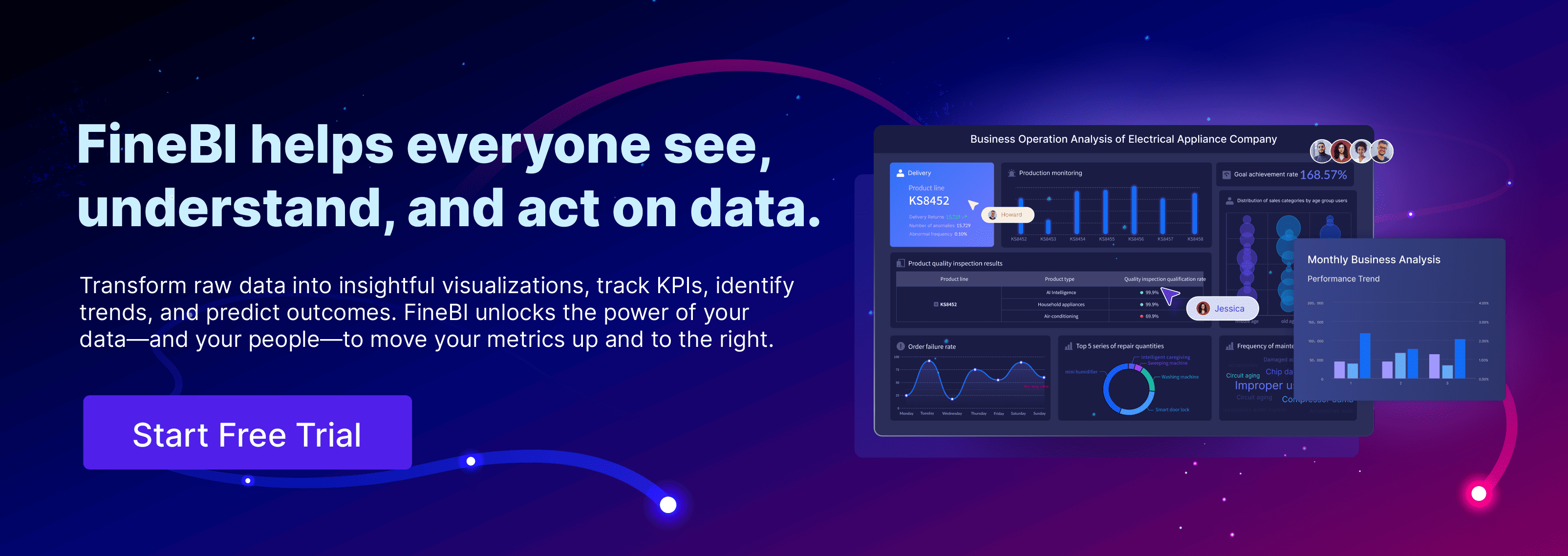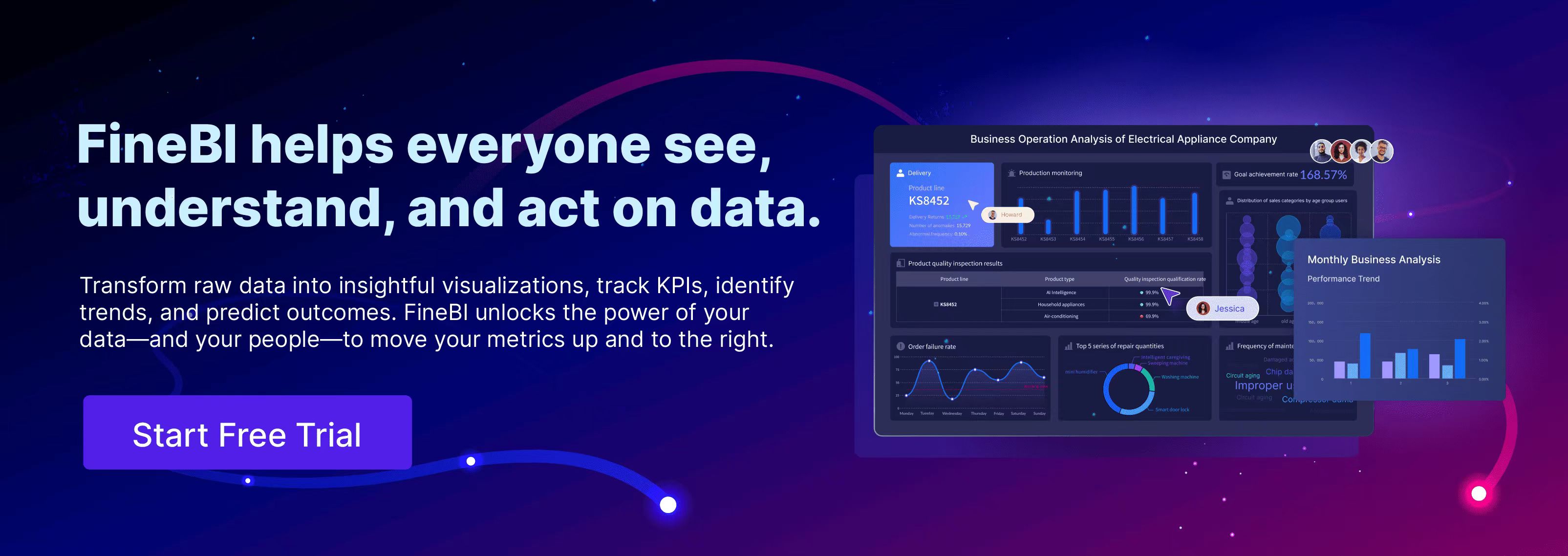The business landscape in Malaysia revolves around data. To thrive, you must harness BI tools. These tools empower you to analyze data effectively, enabling smarter decisions and enhanced efficiency. The numbers speak for themselves: the global business intelligence market is set to grow to $54.27 billion by 2030, with mobile analytics projected to hit $51.5 billion by 2032. Companies in Malaysia that embrace data-driven strategies are 77% more likely to succeed. With such growth, relying on traditional methods will leave you behind in this competitive era in Malaysia.
Understanding BI Tools in 2025

What Are BI Tools?
Business intelligence tools are software solutions designed to help organizations in Malaysia analyze data and extract actionable insights. These tools simplify complex data processes, enabling you to make informed decisions quickly. They cater to various users, from business analysts to executives, by providing easy access to data and analytics.
in Malaysia, the demand for BI tools continues to grow due to their ability to democratize data analysis. For example:
- The global business intelligence market is projected to reach $33.3 billion by 2025.
- The self-service BI market is expected to grow at a CAGR of 14.90% from 2025 to 2034.
These tools empower you to explore data independently, reducing reliance on IT teams and fostering a data-driven culture.
Core Functionalities of BI Tools
Modern BI tools offer a wide range of functionalities that streamline data analysis and decision-making. Here’s a breakdown of their core features:
| Core Functionality | Description |
|---|---|
| Data Preparation | Cleaning and organizing data for analysis. |
| Data Visualization | Creating graphical representations of data to identify trends and insights. |
| Reporting | Generating reports to communicate findings and metrics. |
| Governance | Ensuring data quality and compliance with regulations. |
| Automated Insight Generation | Using algorithms to automatically generate insights from data. |
| Data Storytelling | Combining visualizations with narratives to present data compellingly. |
| Business Monitoring | Tracking KPIs and metrics to monitor performance. |
| Predictive Analysis | Forecasting future trends and behaviors using historical data. |
These functionalities make BI tools indispensable for organizations in Malaysia aiming to stay competitive in a data-driven world.
The Evolution of BI Tools
The journey of business intelligence tools spans decades, evolving to meet the changing needs of organizations in Malaysia.
| Time Period | Tool/Concept | Description |
|---|---|---|
| 1980s-1990s | Executive Information Systems (EIS) | Provided summary-level information and KPIs on dashboards for executives. |
| 1990s | Online Analytical Processing (OLAP) | Enabled users to generate ad hoc queries and navigate data interactively. |
| 2000s | Dashboards and Scorecards | Offered real-time monitoring of key metrics through interactive visuals. |
| 2010s | Self-Service BI | Allowed non-technical users to analyze data and create reports independently. |
| Present | Cloud-Based BI | Provides scalability and flexibility for data storage and analysis in the cloud. |
The rise of self-service BI and cloud-based platforms has transformed how organizations in Malaysia use data. These advancements enable you to access real-time insights, collaborate effectively, and make faster decisions.
Key Benefits of BI Tools for Modern Organizations in Malaysia
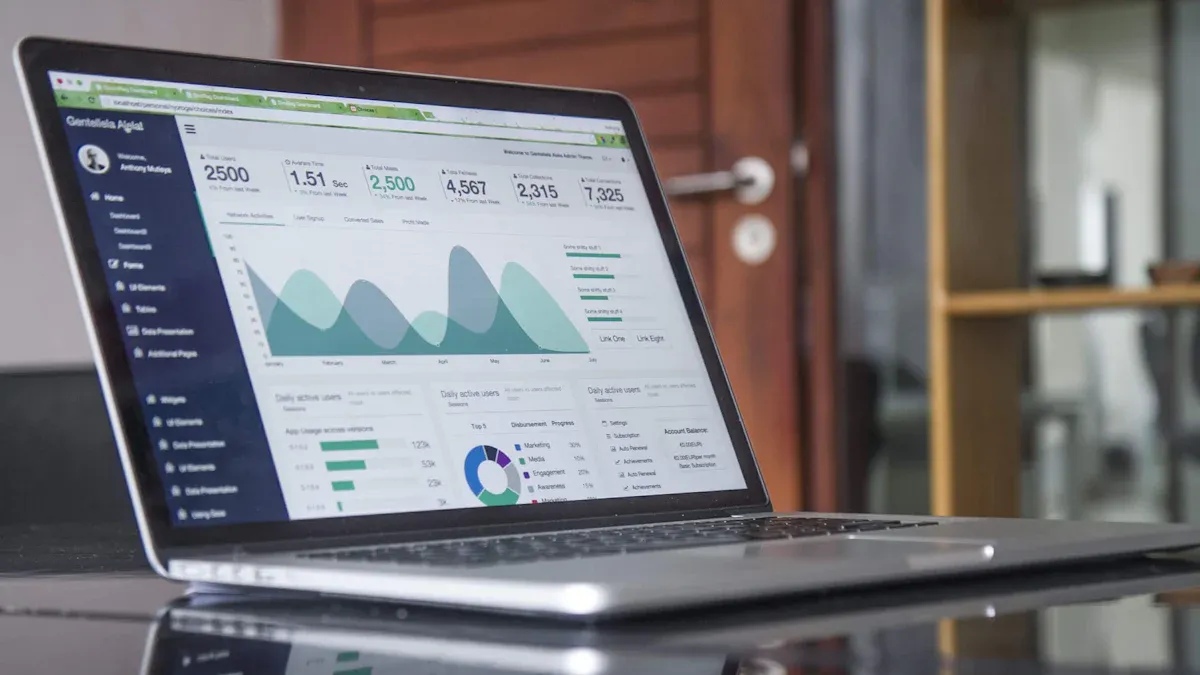
Real-Time Insights for Smarter Decision-Making
Real-time information transforms how you approach business decisions. By accessing up-to-date data, you can act swiftly and confidently in dynamic situations. BI tools provide transparency and accountability, ensuring decisions rely on factual data rather than intuition.
- Real-time insights minimize personal bias, promoting objective decision-making.
- Predictive analytics help you anticipate market shifts and adapt strategies accordingly.
- Optimized processes lead to increased efficiency and reduced costs.
For example, advanced analytics allow you to forecast customer behavior or identify emerging trends before competitors. This capability empowers you to make proactive business decisions that drive better business results.
Boosting Efficiency Through Automation
Automation within BI tools revolutionizes business operations. By automating repetitive tasks, you save time and reduce errors, enabling your team to focus on strategic initiatives.
| Metric | Evaluation |
|---|---|
| Time Saved on Report Generation | BI tools significantly decrease the time required to produce reports. |
| Accuracy and Consistency | Automated reporting minimizes human errors and ensures consistent accuracy across reports. |
| Real-Time Data Updates | Real-time insights ensure timely decisions by providing access to current information. |
Automated processes also reduce operational costs. AI-driven workflows optimize resource allocation and streamline operations, enhancing profitability. For instance, sensitivity analysis shows how automation can lower expenses while improving productivity. These features make BI tools indispensable for modern organizations in Malaysia striving to maximize efficiency.
Gaining a Competitive Edge with Business Intelligence
Business intelligence tools give you the power to stay ahead in a competitive marketplace. By analyzing data effectively, you uncover valuable patterns, predict trends, and adapt to rapid changes.
Organizations in Malaysia that leverage BI tools gain a significant advantage. They understand customer preferences and market dynamics, enabling them to seize emerging opportunities. Data-driven companies are:
- 23 times more likely to acquire customers.
- 6 times more likely to retain customers.
- 19 times more likely to achieve profitability.
In a global marketplace, the ability to harness data ensures you remain agile and responsive. BI tools help you optimize business operations, detect patterns, and make informed business decisions. This adaptability positions your organization in Malaysia for sustainable growth and long-term success.
How FanRuan Empower Organizations in Malaysia with BI Tools

FineBI: A Self-Service Business Intelligence Solution
FineBI stands out as a self-service business intelligence tool designed to simplify data analysis for users across all skill levels. Its intuitive interface and robust features empower you to explore data independently without relying on IT teams. This accessibility fosters a culture of data-driven decision-making within your organization in Malaysia.
"We’ve always striven to improve our operational efficiency and service quality. FineBI and FineReport have been helping us achieve these goals. The ease of self-service analytics and the powerful visualizations have transformed how we make decisions. We're confident that this partnership will continue to support our long-term success." — Macao Water Testimonial
FineBI’s user-friendly design eliminates the steep learning curve often associated with traditional tools. Transitioning from Excel to FineBI allows employees to perform analyses independently, improving efficiency. Additionally, FineBI integrates multiple data sources into a single platform, providing real-time insights into operational performance. Its built-in calculation formulas further simplify the process, removing the need for extensive SQL coding.
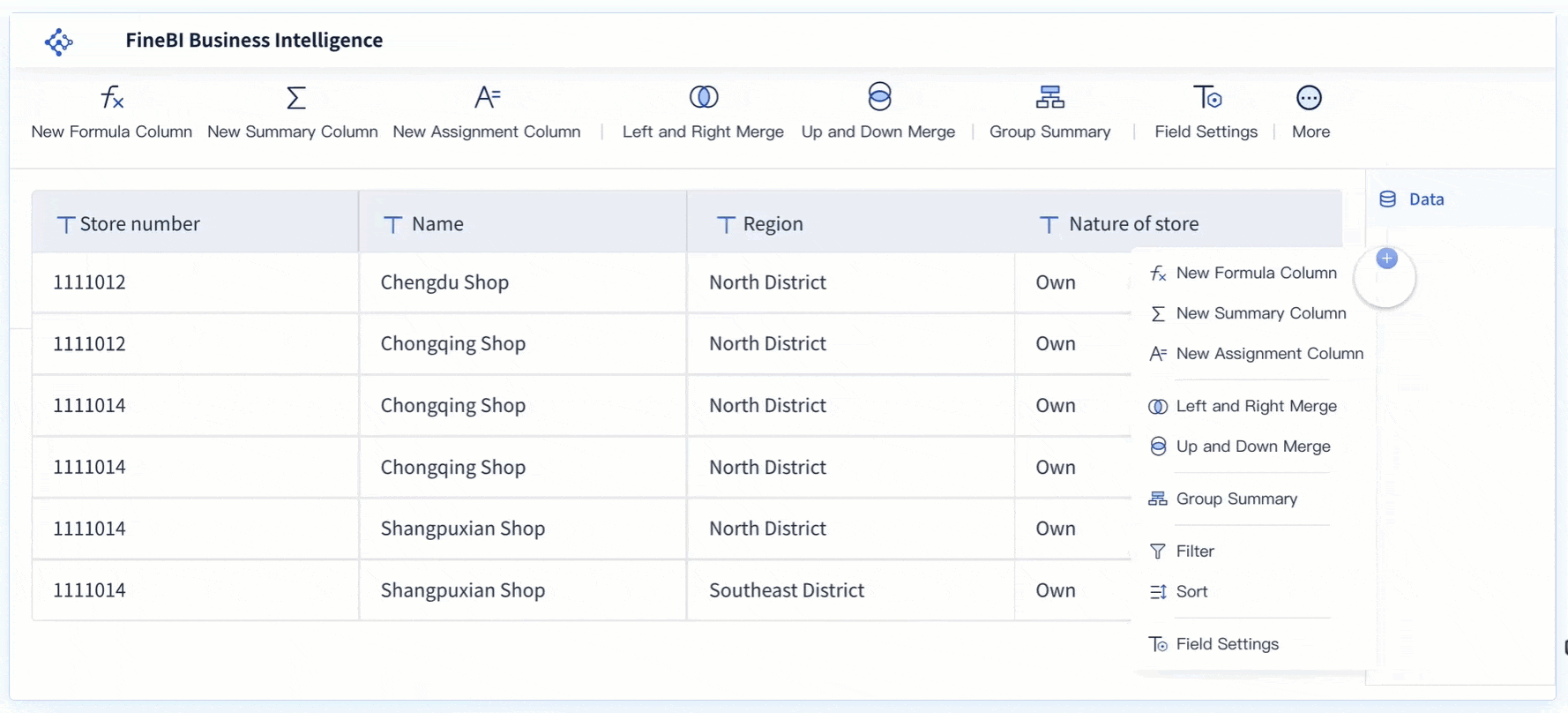
By leveraging FineBI, you can streamline your data analysis processes, reduce dependency on technical teams, and make faster, more informed decisions.
Real-World Use Cases of FineBI in Action
Organizations in Malaysia across industries have successfully implemented FineBI to address their unique challenges. For instance, a leading bank used FineBI to empower its departments with self-service analytics. Previously, the IT department managed all data and report generation, which caused delays. With FineBI, departments like corporate finance and risk management gained the ability to analyze data independently.
This shift resulted in:
- Over 300 effective analysis templates for various departments.
- Faster decision-making processes due to reduced reliance on IT teams.
- Improved agility in responding to market changes.
FineBI’s ability to handle large datasets and provide real-time insights makes it a valuable asset for businesses aiming to enhance operational efficiency. Whether you operate in manufacturing, retail, or financial services, FineBI adapts to your needs, enabling you to unlock the full potential of your data.
Why FanRuan Leads the Business Intelligence Market
While FineBI empowers users with self-service analytics and dynamic dashboards, FanRuan's commitment to comprehensive business intelligence solutions is further exemplified by FineReport. This enterprise-level reporting tool excels in generating highly formatted, pixel-perfect reports and dashboards, offering robust features such as flexible report design, diverse visualization types, interactive analysis, and seamless data integration. FineReport's capabilities make it an indispensable asset for organizations in Malaysia seeking detailed and customizable reporting solutions. Here’s how FineReport outshines its competitors:
| Feature | FineReport Advantages |
|---|---|
| Data Visualization | Offers stunning data visualization with 19 categories and over 50 styles of self-developed HTML5 charts. |
| Report Creation | Allows users to create reports or dashboards within 10 minutes using drag & drop ease. |
| Data Integration | Supports combining data from multiple sources for comprehensive analysis with one click. |
| Deployment and Maintenance Cost | Simplifies deployment and integration, lowering operation and maintenance costs. |
| Customization | Open APIs enable easy and quick customization of reporting systems by IT. |
| Data Entry Efficiency | Features a data entry function that improves the efficiency of updating real-time data. |
| Trend Detection | Effectively monitors ongoing operations and detects trends to identify new business opportunities. |
FanRuan’s solutions, including FineBI, provide unmatched flexibility and scalability. These tools enable you to integrate data from various sources, create visually stunning dashboards, and detect trends that drive business growth. By choosing FanRuan, you gain access to cutting-edge business intelligence solutions that empower your organization in Malaysia to thrive in a data-driven world.
FanRuan has established a localized team in Malaysia to provide comprehensive project implementation and technical support services. This local presence ensures faster response times, better alignment with regional business needs, and smoother deployment of products like FineReport and FineBI. Clients in Malaysia benefit from personalized assistance throughout the project lifecycle, from initial setup to post-deployment optimization.
Overcoming Challenges in Adopting BI Tools
Addressing Common Misconceptions About BI Tools
Many organizations in Malaysia hesitate to adopt business intelligence tools due to misconceptions. These myths often stem from outdated practices or a lack of understanding about modern BI capabilities. Let’s debunk some of the most common ones:
| Myth | Reality |
|---|---|
| Generating reports is IT’s job. | IT should focus on core missions, while business users can generate reports, enhancing data accessibility and decision-making. |
| The more data scientists you have, the more value you derive from data. | Citizen data scientists can be just as effective as data scientists, provided they have the right tools and data access. |
| The adoption of data-driven decision-making will never grow beyond people with technical skills. | Less than 20% of organizations maximize BI tools, indicating a need for better user-friendly solutions and training. |
According to a McKinsey survey, fewer than 20 percent of companies fully utilize their BI tools. This highlights the need for increased adoption of BI tools that are intuitive and accessible to non-technical users. By addressing these misconceptions, you can unlock the true potential of data-driven decisions within your organization in Malaysia.
Ensuring a Smooth Implementation Process
Adopting BI tools requires careful planning and execution. Many organizations in Malaysia face challenges such as data quality issues, user resistance, and scalability concerns. To overcome these obstacles, consider the following strategies:
- Align BI initiatives with your business goals to ensure relevance and impact.
- Provide comprehensive training to empower users and encourage adoption.
- Foster collaboration across departments to streamline data sharing and analysis.
- Continuously improve your BI processes to adapt to changing needs and technologies.
By focusing on these strategies, you can ensure a seamless transition and maximize the benefits of BI tools for business performance management.
The Role of FineDataLink in Data Integration for BI Success
Data integration often poses a significant challenge during BI tool adoption. FineDataLink simplifies this process by addressing common pain points like data silos and real-time synchronization. Its core features include:
- Real-Time Data Synchronization: FineDataLink synchronizes data across multiple systems with minimal latency, ensuring your BI tools always work with the latest information.
- ETL/ELT Capabilities: It enables efficient data preprocessing, making it easier to build both real-time and offline data warehouses.
- API Development: With no coding required, you can create APIs in minutes to share data seamlessly across platforms.
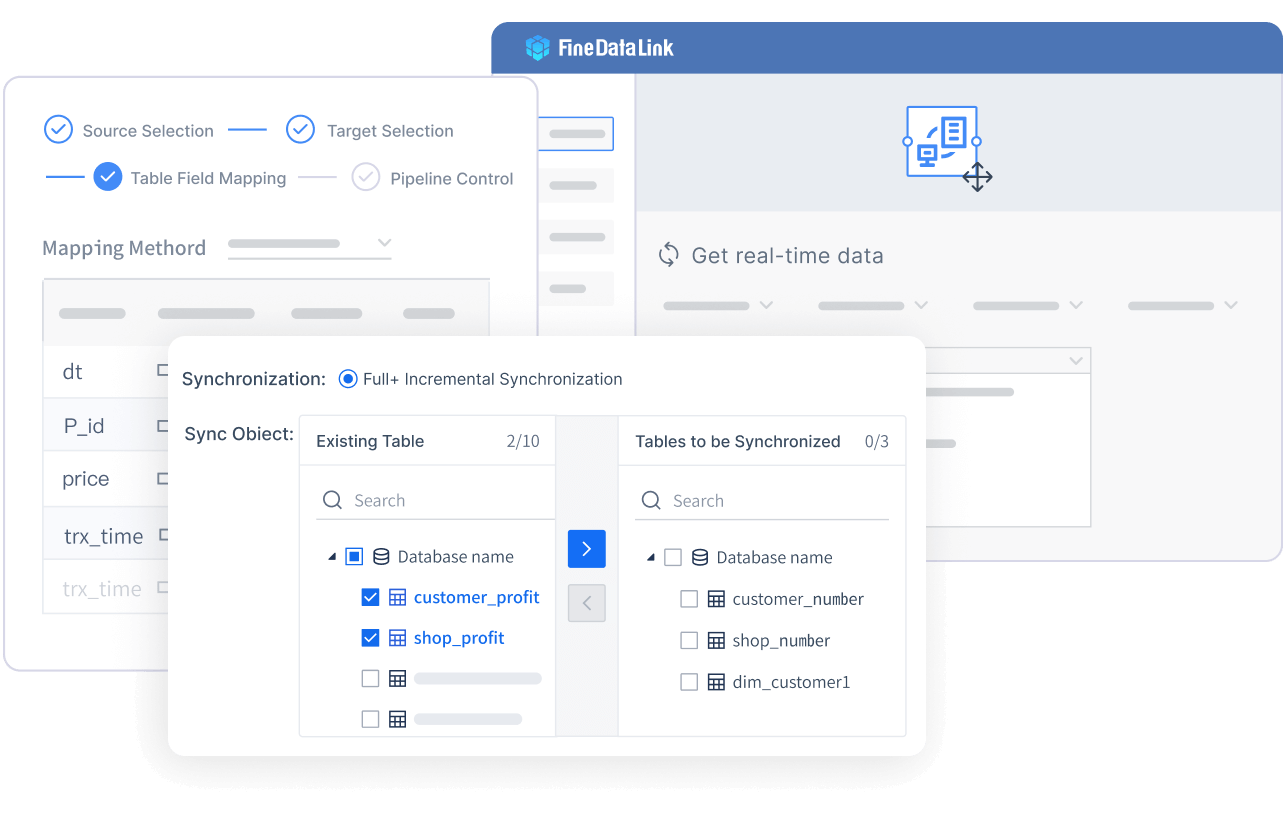
FineDataLink’s user-friendly interface and robust functionality make it an essential component for successful BI adoption. By integrating data effectively, you can enhance the accuracy and reliability of your analytics, paving the way for better decision-making and improved business outcomes.
Why 2025 Is the Year to Invest in BI Tools

The Risks of Delaying BI Adoption
Postponing the adoption of business intelligence tools can lead to significant financial and operational setbacks. Organizations in Malaysia often underestimate the hidden costs of maintaining outdated systems. For instance:
- Zendesk faced unexpected expenses while optimizing sales data integration.
- HubSpot encountered higher costs due to ongoing marketing data cleaning efforts.
- ServiceNow struggled with managing customer data, leading to substantial expenses.
These examples highlight the financial strain caused by delayed BI adoption. According to McKinsey, breaking down data silos can boost productivity by 20-25%. However, Gartner reports that poor data quality costs organizations an average of $15 million annually. Delaying BI implementation not only increases operational inefficiencies but also limits your ability to compete in a data-driven market in Malaysia.
Steps to Begin Your BI Journey with FineBI
Starting your BI journey with FineBI is straightforward and impactful. Follow these steps to unlock the potential of your data:
- Assess Your Needs: Identify key areas where data analysis can drive better decisions.
- Integrate Data Sources: Use FineBI to consolidate data from multiple platforms into a unified system.
- Empower Your Team: Train employees to use FineBI’s self-service analytics for independent data exploration.
- Monitor Progress: Track KPIs and adjust strategies based on insights from FineBI dashboards.
FineBI simplifies the transition to a data-driven culture. Its user-friendly interface and real-time analysis capabilities ensure your team can make informed decisions quickly. By adopting FineBI, you position your organization in Malaysia for long-term success.
Future Trends in Business Intelligence
The future of business intelligence promises exciting advancements. Emerging trends include:
- Business Intelligence-as-a-Service: This model allows you to access expert insights without heavy IT involvement.
- Collaborative BI: Future systems will integrate BI tools into workflows, enabling real-time decision-making.
- Augmented Analytics: AI will enhance data analysis, providing quicker and more accurate insights.
- Self-Service BI: Users will demand greater independence in accessing and analyzing data.
These trends will redefine business intelligence strategies, making tools more accessible and efficient. Predictive analytics will also play a crucial role, empowering you to anticipate market shifts, mitigate risks, and improve operational efficiency. Investing in BI tools now ensures you stay ahead in this rapidly evolving landscape.
Business intelligence tools are no longer optional in 2025. They are essential for smarter decisions, improved efficiency, and staying ahead in a competitive market in Malaysia.
- The BI market is projected to grow from $20.516 billion in 2020 to $40.50 billion by 2026, with a CAGR of 12%.
- North America leads the market, driven by technological advancements and data growth.
- Over 236,000 companies globally rely on BI tools, with 273 actively producing BI technologies.
FineBI and FineReport empower you to harness data effectively. Start your BI journey in Malaysia today to align your strategies, enhance decision-making, and prepare for tomorrow’s challenges.
? Tip: Start small when adopting BI tools. Focus on one department or process, then expand as your team becomes comfortable with the technology.
Click the banner below to experience FineBI for free and empower your enterprise to convert data into productivity!
Continue Reading about BI Tools
Empowering BI Journey: Why FCP Is Among the Best IT Certifications
Unlocking Success with Data Warehousing and Business Intelligence
FAQ
Q1: What is the difference between traditional reporting tools and BI tools?
Traditional reporting tools focus on static reports, while BI tools provide dynamic, real-time insights. BI tools allow you to explore data interactively, automate processes, and make data-driven decisions. They also integrate multiple data sources, enabling comprehensive analysis and visualization.
Q2: How can small businesses benefit from BI tools?
BI tools help small businesses analyze customer behavior, track performance, and identify growth opportunities. They simplify data analysis, enabling you to make informed decisions without needing a large IT team. This efficiency boosts productivity and competitiveness.
Q3: Do BI tools require technical expertise to use?
Modern BI tools like FineBI are designed for all skill levels. Their user-friendly interfaces and self-service features let you analyze data without coding knowledge. Training and intuitive workflows make it easy for anyone to explore and visualize data.
Q4: How do BI tools ensure data security?
BI tools implement role-based access controls, data masking, and encryption to protect sensitive information. FineBI, for example, allows you to assign permissions based on roles and departments, ensuring only authorized users access specific data.
Q5: Can BI tools handle real-time data?
Yes! BI tools like FineBI support real-time data analysis. They synchronize data across systems instantly, providing up-to-date insights. This capability helps you respond quickly to market changes and make timely decisions.

The Author
Lewis
Senior Data Analyst at FanRuan
Related Articles

Reviews of Data Intelligence Companies Leading the Industry
Compare top data intelligence companies and platforms, highlighting key features, integration, and business impact for informed decision-making.
Lewis
Nov 11, 2025

What Is Enterprise BI and Why Should You Care
Enterprise BI empowers organizations with real-time insights, scalable analytics, and unified data, driving smarter decisions and a competitive edge.
Lewis
Nov 09, 2025

Business Intelligence Engineer Amazon Salary Revealed
The average business intelligence engineer amazon salary in 2025 is $101,752, with total compensation reaching up to $224,000 based on level.
Lewis
Sep 09, 2025
